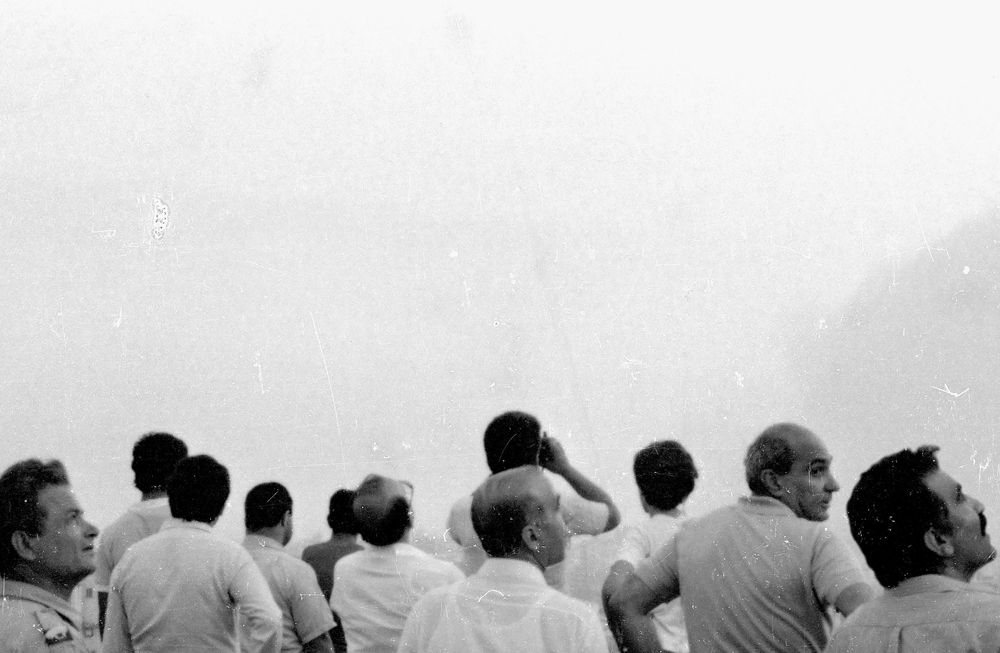Not Quite How I Remember It
The Power Plant, Toronto, Canada
The Power Plant, Toronto, Canada

Walter Benjamin, in his ‘Short History of Photography’ (1931), notoriously claimed that ‘less than ever does the mere reflection of reality tell us anything about reality’. Citing Bertolt Brecht, he argued that for photography to be politically committed ‘something must in fact be built up, something artificial’. These influential words have doubtless inspired a great deal of contemporary photography, video and even sculpture – some good, much of it just formulaic. Bringing together the work of 14 artists engaged with processes of re-enactment and reconstruction, ‘Not Quite How I Remember It’ demonstrated, however, that there are still a few fresh areas to be explored in this vein. The strongest work in the exhibition unexpectedly managed to complicate realist documentary through formal disruptions that defamiliarized the past in order to reframe the present.
This approach was most literally evident in Gerard Byrne’s video installation 1984 and Beyond (2005), which borrowed both its title and its script from a round-table discussion originally printed in a 1963 issue of Playboy between a group of science fiction writers including Ray Bradbury, Arthur C. Clarke and Robert Heinlein. In the video, Byrne’s Dutch actors enthusiastically ham up the stilted dialogue of the original, heavily edited transcript, delivering predictions such as a permanent base on the moon by 1980 with deadpan sincerity. Byrne further reframed his appropriated script by dividing it into 12 scenes spread unevenly and non-sequentially across three flat-screen monitors. On one monitor, for instance, the group repeatedly describes the bachelor of the future’s typical day as an elaborate wet dream well matched to its Playboy audience. This wishful thinking is pointedly set against a backdrop of outdated hallmarks of progress, from Dutch Modernist architecture and a large, outdoor Barbara Hepworth sculpture to the monumental Unisphere built for the New York World’s Fair of 1964.
For his installation Tools and Grammar (2007) Felix Gmelin similarly reworked a promotional film made in 1926 by a German school for the blind to create a cine-essay on sense memory, synaesthesia and the conventions of realism. For one video projection Gmelin overdubbed a fragment of the silent film, in which blind children explore a local cemetery before sculpting clay tombstones from memory, with a description by the Russian filmmaker Vsevolod Pudovkin of a scenario – a crash heard outside the window, followed by an oddly silent view of the traffic below – in which non-synchronous rather than sync-sound is more naturalistic. Although heavy-handed in theory, the video is successful, thanks to the discontinuous yet strangely congruent pairing of the children’s hand gestures with the action of Pudovkin’s narrative. More tediously, the installation mixes close-ups of the clay sculptures, digitally printed on canvas, with crudely tactile paintings of those same images. A slide projection partly obscures one of the photographs with multilingual subtitles, thoughts on the disconnection of the senses, taken from Jean-Luc Godard’s Pierrot le fou (1965). Combining painting, photography and sculpture, these auxiliary works muddle the clarity of Gmelin’s installation.
Godard again served as a point of reference in Nancy Davenport’s video loop Weekend Campus (2004). Inspired by the famous seven-and-a-half-minute continuous tracking shot from Weekend (1967), Davenport digitally collaged together hundreds of still photographs to create a primitively animated panning shot combining car crashes, Brutalist architecture and unexpectedly calm, if not bored, onlookers. The video was installed next to a series of photographs, ‘Campus’ (2004), depicting eerily vacant college campuses, again in the Brutalist style, that were once the sight of large student protests. In these photographs, blown-out artificial lighting took on allegorical significance as a stand-in for the missing student radicals. Together these works hinted at a past radicalism arguably lacking on college campuses today, but they failed to shed any light on the current situation.
Walid Raad, known for presenting archival materials mixed with forged historical documents under the pseudonym The Atlas Group, made a more significant impact by transgressing this imperative against unmediated images. Printed from scratched and deteriorating negatives, the photographs in Raad’s portfolio Untitled (1982–2007) (2008) were shot while the artist was still a teenager living in Beirut at the outbreak of the Israel–Lebanon conflict. On the surface Raad’s black and white images are surprisingly calm. Citizens watch with arms crossed as bombs sail overhead. In other images heavy artillery sits motionless in the grass. The smoke rising over Beirut is blocked out by the brightly coloured streaks and spotting that are slowly destroying the negative. Left momentarily off-guard, viewers are unprepared when the real impact of Raad’s images hits them.






















